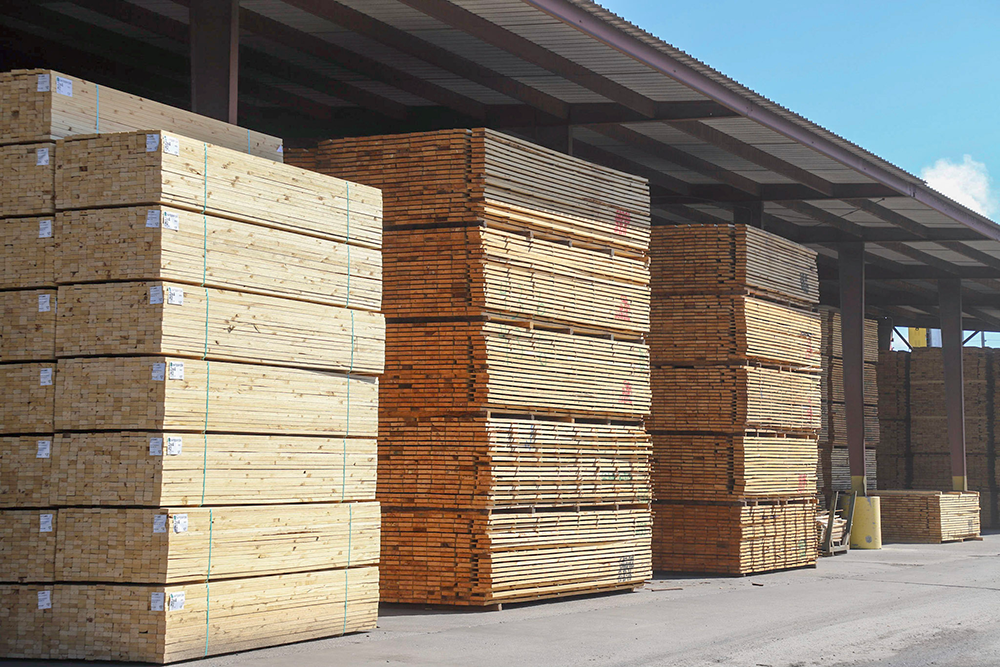
On February 18, China’s Tariff Committee of the State Council announced that it will open a process for companies to apply for retaliatory tariff exemptions. To secure an exemption, companies registered to conduct business in China must file an application and specify the amount of product they plan to import from the U.S. under a given tariff code. If granted, the Chinese retaliatory tariffs currently in effect would no longer apply against that company’s imports of that specific product up to the authorized volume of imports for one year from the date of approval. The Tariff Committee expects that these exemptions will encourage imports and help fulfill China’s purchasing agreements under the Phase One trade deal.
In particular, China is soliciting applications for nearly 700 American-made products. The product list, which was published alongside the announcement, includes several softwood lumber products:
- Korean Pine/Mongolian Scotch Pine Wood, Sawn Lengthwise, Thk-6Mm (tariff code: 44071110)
- Radiata Pine Wood, Sawn Lengthwise, Thk-6Mm (tariff code: 44071120)
- Douglas Fir Wood, Sawn Lengthwise, Thk-6Mm (tariff code: 44071130)
- Other Pine Wood, Sawn Lengthwise, Thick-6Mm (tariff code: 44071190)
- Fir (Abies Spp.) And Spruce (Picea Spp.) Wood, Sawn Lengthwise, Thick-6Mm (tariff code: 44071200)
- Other Coniferous Wood, Sawn Lengthwise, Thick-6Mm (tariff code: 44071900)
While China appears prepared to prioritize tariff exemption applications for products on this list, the announcement also invites companies to submit applications for unlisted products. In addition to the standard application, companies filing for exemptions on unlisted products must also include an explanation for why tariff relief is needed, and the impact retaliatory tariffs have had on their company.
The tariff exemption application announcement was soon followed by reports from the American Hardwood Export Council (AHEC) that the Chinese government plans to lift U.S. Hardwood lumber import tariffs for one year, beginning February 28, 2020. News which raises hopes that temporary relief from steep Chinese retaliatory tariffs may be on the horizon for the Southern Pine lumber industry.
China’s Tariff Committee will begin accepting exemption applications on March 2, 2020.
Applications may be filed online at https://gszx.mof.gov.cn.
On April 17, 2020, China’s State Council Tariff Commission (SCCTC) published a revised version of
the Step-By-Step Tariff Exclusion Guide. On May 12, 2020, the USDA Foreign Agricultural Service’s Global Agricultural Information Network (GAIN) released a report including an unofficial English translation of the revised guide. Notable revisions include additional instructions on how to modify, withdraw, and delete tariff exclusion applications.
The GAIN report including the unofficial translation of the revised guide can be accessed here:
https://apps.fas.usda.gov/newgainapi/api/Report/DownloadReportByFileName?fileName=China%20Revises%20Step-By-Step%20Tariff%20Exclusion%20Guide_Beijing_China%20-%20Peoples%20Republic%20of_05-11-2020
On April 17, 2020, China’s SCCTC updated a Frequently Asked Questions Document to replace the previous version published on March 11, 2020. On May 14, 2020, the USDA Foreign Agricultural Service’s Global Agricultural Information Network (GAIN) released a report including an unofficial English translation of the revised document. The updated document describes changes to China’s market-based tariff exclusion process.
The GAIN report including the unofficial translation of the Frequently Asked Questions Document can be accessed here: https://apps.fas.usda.gov/newgainapi/api/Report/DownloadReportByFileName?fileName=China%20Updates%20Frequently%20Asked%20Questions%20Document%20on%20Tariff%20Exclusion%20Process_Beijing_China%20-%20Peoples%20Republic%20of_05-12-2020
LINK TRANSLATION: In today’s global economy, being able to read and understand a foreign language can be an essential part of your success. While learning a new language may be exciting to some, others might find the process too challenging. Fortunately, technology can assist us in becoming more efficient at interpreting documents swiftly. Each of the four primary internet browsers offer a translation service or extension. Click on your preferred browser below for additional information on how to install a translation service extension for your browser. It’s always a good practice to check with your IT Department first before you download. Or, even better, ask them to install it!